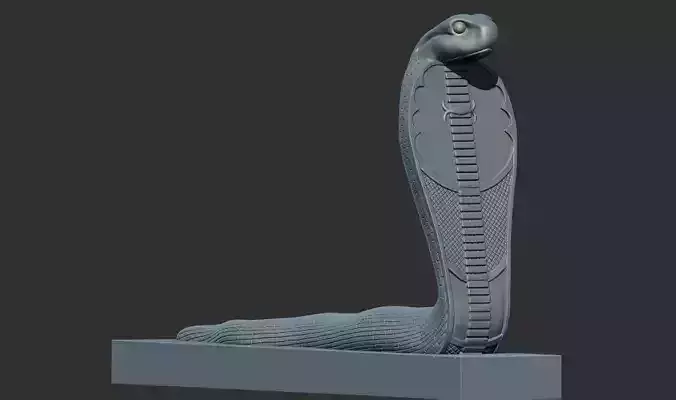1/8
Egyptian Pharaoh cobra naja iaret from Tutankhamun 3D Printable model
CartoucheCobra from the tomb of King Tutankhamun
The cobra, known as the iaret in ancient Egypt, was commonly depicted standing upright with its hood expanded. The Greek term uraeus was often used to describe this pose of the cobra. This word may have originated from Egyptian terms meaning she who rears up. The specific species of cobra represented by the uraeus is the Naja haje.
In terms of symbolism, according to the Story of Re, the goddess Isis created the first uraeus using dust from the earth and the spittle of the sun-god. This uraeus played a crucial role in helping Isis secure the throne of Egypt for her husband Osiris.
The uraeus held various meanings throughout history, including representing the sun, Lower Egypt, the king, and numerous deities.
As the sacred creature of the city of Buto in the Nile Delta, the cobra was referred to by the same name. It eventually became a symbol for all of Lower Egypt. The uraeus was often depicted alongside the vulture Nekhebet, who served a similar purpose for Upper Egypt. Together, they symbolized the unification of the two regions. These creatures also appeared together in the pharaoh's nebty, or Two Ladies, name.
The cobra was also known as the fiery eye of the sun god Re, and sometimes two uraei were shown on either side of the solar disk.
In the tomb of Tutankhamun, a gilded wooden cobra known as netjer-ankh, meaning living god, was discovered (see picture on the left). This artifact represents the cobra's association with the afterlife. In funerary art, the cobra is often depicted spitting fire. It was believed that two cobras guarded the gates of each hour of the underworld. During the Late Period, uraei were also depicted pulling the sun's barque in funerary papyri. All of these examples clearly demonstrate the cobra's protective nature.
REVIEWS & COMMENTS
accuracy, and usability.










